French Media Promotes Slavonia, Croatian Islands as Top Holiday Destinations
August 13, 2020 - In a primetime slot on French TV channel TF1, the popular show 'Cuisine Impossible' aired, in which the gastronomic charms of Slavonia were presented. But that's only part of the French promotion of Croatia.
The TV series shows destinations through the discovery of local products and producers, and a special feature about Croatia was organized by the Croatian National Tourist Board, the CNTB Representation in France and the Vukovar-Srijem County Tourist Board.
"The exceptionally viewed show, which is watched by over a million viewers, presented the Croatian region that French travel enthusiasts are just discovering. This show contributed not only to the promotion of the tourist offer of Slavonia but also to the diversity of the entire Croatian tourist offer. In addition, I believe that the broadcast will encourage a larger number of reservations for next year, when many French tourists will take their trips planned for this year," said the director of the Croatian National Tourist Board Kristjan Stanicic, emphasizing that there is currently an average of around 14,000 French guests in Croatia daily.
In the show dedicated to Slavonia, French culinary chef Julien Duboue accepted the challenge according to which, after tasting fish stew hosted by local family farm Zoltan Jovic, he had to prepare an identical dish in less than 48 hours, i.e., identify the ingredients of this authentic Slavonian dish, catch fish in the Danube and procure the remaining groceries. After successfully fulfilling the challenge, he emphasized the exceptional hospitality of Slavonians. The show features Ilok landscapes and cellars, vineyards, quality wine, and Slavonia is presented as a region with a rich tourist offer.
"We are satisfied with the successful realization of this project, through which Croatia once again placed itself on the list of favorite European destinations of the French, who from year to year discover new Croatian regions. We are sure that in the coming period, the richness of Slavonia's tourist offer will attract more and more French people," said the director of the CNTB France, Daniela Mihalic Djurica, adding that many other French media have been reporting on Croatia as a hit destination.
For example, in the most-watched term of the French national television M6, the show 'Zone interdite' was broadcast, entirely dedicated to Croatian tourism and Croatia, which was presented as an Adriatic gem and a hit destination for French guests in recent years. The show called "The French have found their place under the Croatian sun" has been watched by several million people so far, and shows destinations such as Split, Pakostane, Pag, Krka National Park, Brac, Hvar and Pag, with a number of useful tips for creating the ideal vacation in Croatia. Days after the broadcast, numerous French media broadcast a summary of the show that reveals why tourists from all over the world adore Croatia.
Also, the prestigious French weekly Le Figaro ranked the Croatian island of Lopud in first among three Mediterranean paradise islands, along with the Greek Santorini and Corsican Brando, while the French edition of lifestyle magazine Grazia, in its article entitled, "The most beautiful European island: A selection of the most beautiful which we dream of visiting", published a list that also includes Croatia, more precisely the island of Hvar, which is in the high fifth place of the most beautiful European islands.
Moteaur Boat, both the leader among the French motor-nautical media and its monthly with a 25-year tradition, has presented Croatia as a nautical paradise in its issue since August, with special emphasis on Vis, which delighted the journalist and camera crew with its beauty and indigenous experience.
The popular 90-minute travel show 'Echappées Belles' is currently being filmed in Istria and on the islands of Cres and Pag. The show is watched by almost two million viewers, and the episode about Croatia will be shown in May 2021 in primetime on the national TV channel France 5.
For the latest travel info, bookmark our main travel info article, which is updated daily.
Read the Croatian Travel Update in your language - now available in 24 languages!
Join the Total Croatia Travel INFO Viber community.
Croatia Wine: ”Every Visit Is A Voyage Of Discovery”
August 9, 2020 - Meet Marc Hough, a former international DJ who became a wine importer after visiting Dubrovnik and trying Croatia wine. In 2020, he returns for his 20th summer.
Situated in the north of England, about halfway up the island called Great Britain, the city of Manchester is famous for its football and music. Mancunians are proud of this. Two members of TCN are from the city, and when someone local asks “Odakle si?”, usually we say “Ja sam iz Manchestera” (I am from Manchester). We don't say "I'm from England" or "Great Britain". Everyone knows where Manchester is.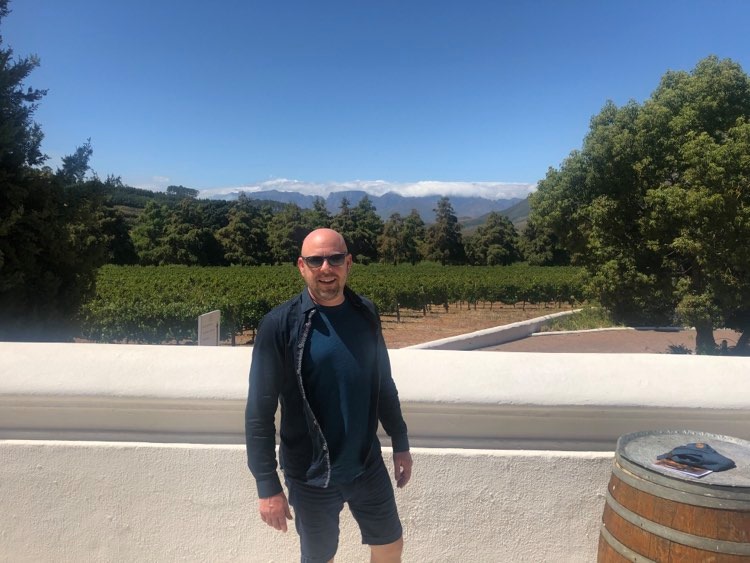
Marc Hough, a former international DJ. His passion for the Plavac he discovered in Dubrovnik turned him into a wine merchant.
20 years ago, Marc Hough was a high profile member of Manchester's famous music scene. He counts members of bands like The Stone Roses and The Happy Mondays as close personal friends. As longstanding DJ to New Order (the band that was once Joy Division), he toured the world playing the music of Manchester to many. But, no more.
“I reached the age of 40 in 2010 and thought, what am I doing with my life?” Hough told TCN over the phone, as he was preparing for a trip Dubrovnik. “DJing and the music business is a young man's game.”
And so, inspired by an enthusiasm for Croatia wine, he turned his back on a high profile DJ career and became a wine bar owner and wine merchant.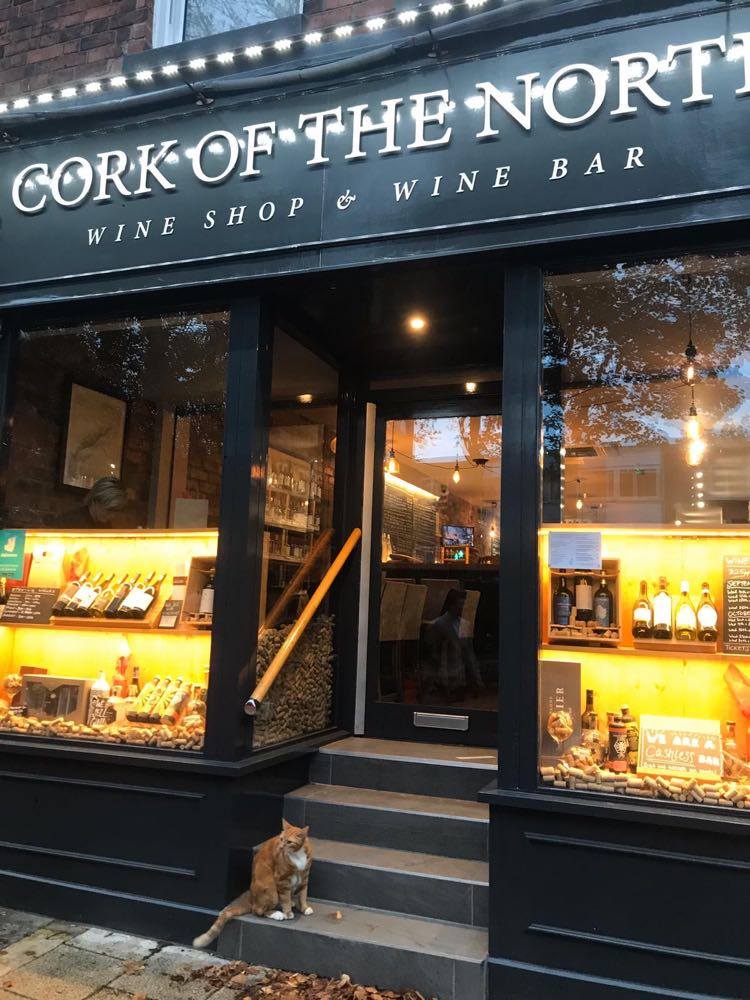
One of Marc's 'Cork Of The North' wine bars / stores near Manchester © Cork Of The North
“When I started, I was literally just selling wine out of the back of my car. I only had five customers and three of those were my dad, my brother and me!” remembers Marc, who has built his independent business considerably since then. He is now a wholesaler, recommending and selling wines to top bars and restaurants in the north of England. He has also opened two of his own wine bars 'Cork Of The North' (which are also wine shops), in Sale and Heaton Moor, near Manchester.
“Croatia plays such a big part in the story,” stresses Marc. “I've been visiting Dubrovnik for over 20 years. I had a friend from there who I met in Manchester. She came to live here for a while to escape the war. After it finished, she went home, invited me to Dubrovnik and I just fell in love with the place.”
“There was a wine bar in the Old Town called D'Vino, run by a half Croatian half Australian guy called Saša. After I saw what he was doing there with Croatia wine, I thought that's exactly the kind of place I'd like to have in Manchester.”
Already passionate about wine thanks to his grandad, that first trip to Dubrovnik made Marc curious to return. On his next visit to Croatia, he travelled further than just the Pearl of the Adriatic and went to the source of some Croatia wine itself.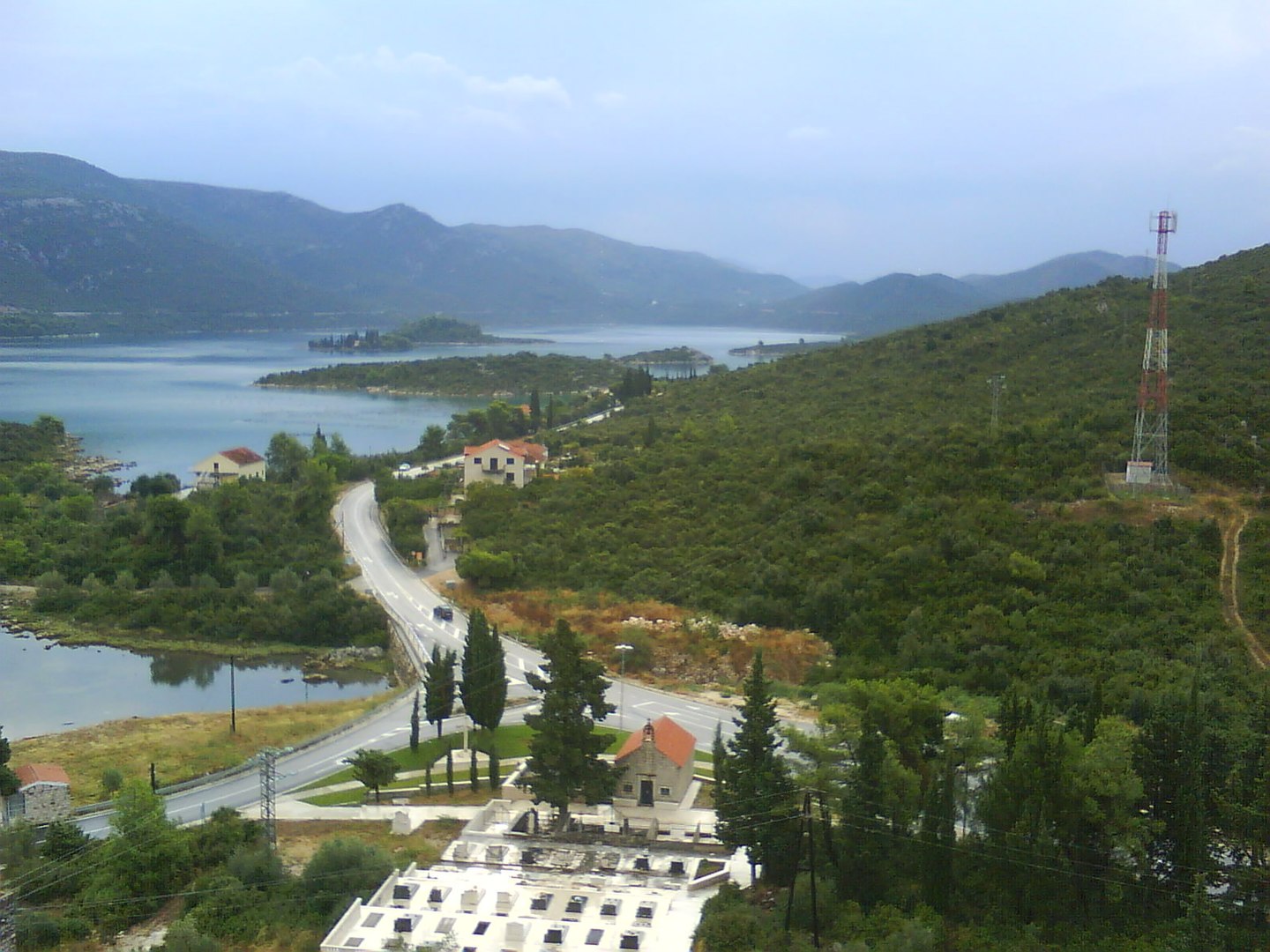
Part of the Pelješac peninsula, which features heavily in Marc's 20-year affair with Croatia wine © Anto
“I came back on a sailing holiday with Bernard Sumner (guitarist of Joy Divison and singer of New Order),” Marc recalls. “He loves sailing and he has his own boat. We went all round Pelješac, Korčula, Brač. I fell in love with Dingač. Since then, I've travelled all of Dalmatia and through Istria learning about the wines. I've been to Bosnia to try their varieties like Vranac. But, for me, the most recent, amazing discovery has been Slavonia. They make some incredible white wines there; Graševina, Cabernet Franc, Traminac.”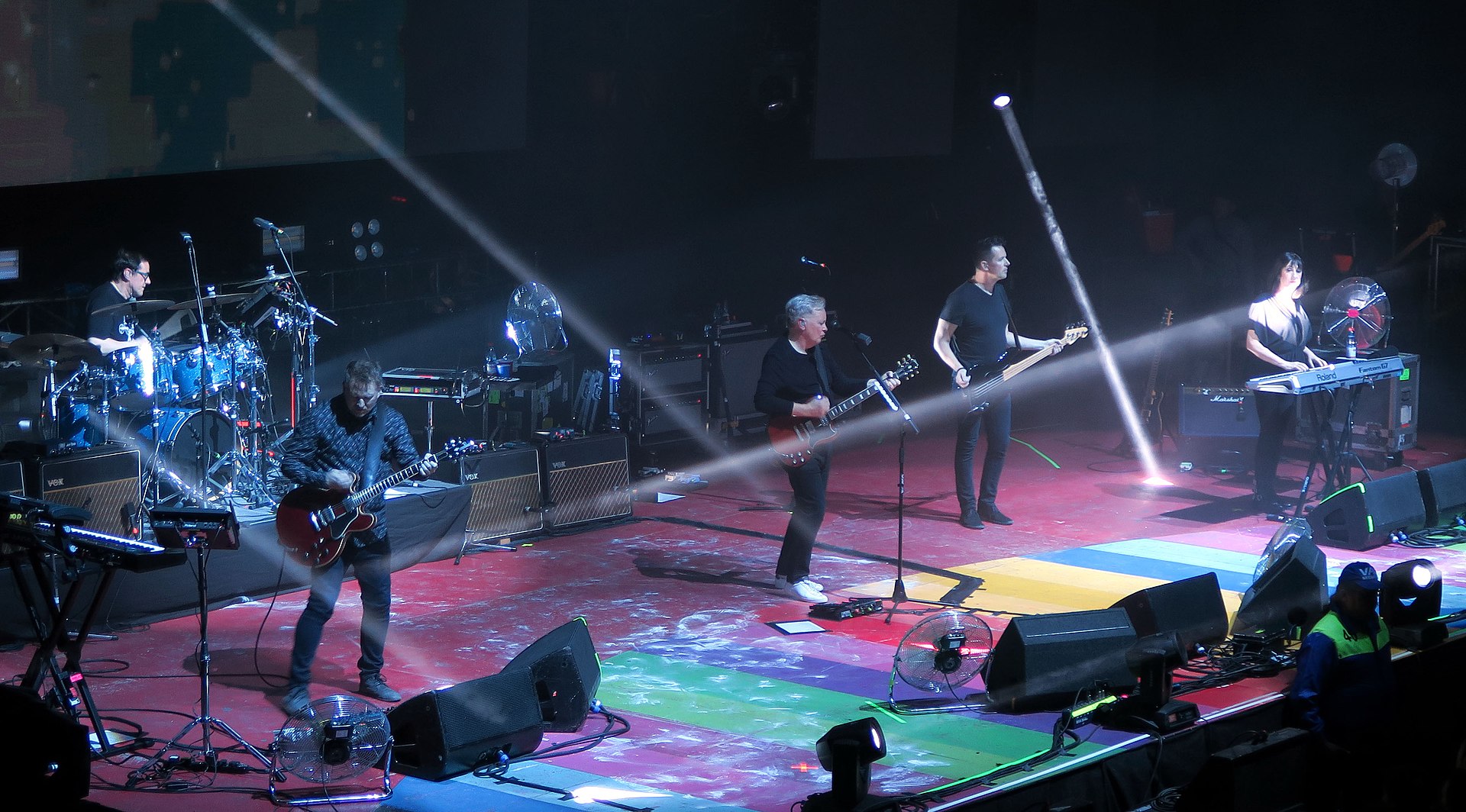
New Order, the band that was once Joy Division. Marc Hough toured the world as their DJ © RL GNZLZ
“For me, it's always half holiday, half work,” Marc tells us, as he packs for his 20th annual trip to Dubrovnik, which begins on Sunday 11 August. “Amazing views, amazing people, amazing food and amazing wine. But, the wine always inspires thoughts of work. I can't help myself. I love visiting the vineyards, meeting the winemakers. It's not the same as when you do it in other countries. In Croatia, you'll often be invited into the kitchen or onto the terrace of the winemaker's home. You'll leave with arms full of different bottles - some gifted - and you can even be sold fine wine unceremoniously in a plastic bottle. I love that informal, homemade feel of the experience. It's charming and honest. When I go on buying trips in France, Spain and Italy, it's rarely like that.”
Dubrovnik's tourist season has this year stalled in response to COVID-19. Its visitors' reliance on charter air and cruise ships has proved inflexible. Yet, a little further up the coast, in Makarska and Omiš, the city centres are now full of families who drive to these places every year. Dubrovnik's offer is more once-in-a-lifetime, less loyalty. Unless, of course, it's the wines and not the walls that call you to Dubrovnik.
“It's inevitable that I'll find something new that I want to bring back with me,” Marc says of his impending trip. “Every visit is a voyage of discovery. This time, although I'll again be based around Dubrovnik, I'm determined to go to Slavonia to look at some Graševina and Cabernet Franc, which thrives in the terroir there.”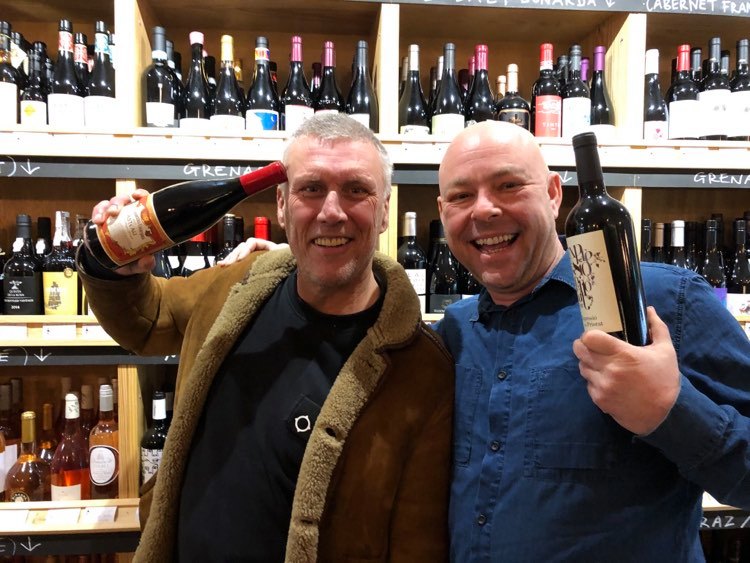
Marc Hough with just one of his famous friends from the Manchester music scene. Bez, of the band Happy Mondays, is now a customer at Cork Of The North © Cork Of The North
“I wanted to start importing Croatia wines years ago but, for someone at my level, it was so difficult before Croatia became a full member of the EU. Tariffs were payable on the borders and if you wanted to move wines from south Dalmatia - Dubrovnik and the islands - you'd have to go through the border with Bosnia. I lost several whole shipments to the Bosnian police, who said my paperwork was incorrect (it wasn't). It's much better these days. But, there's still very little Croatian wine in the UK, even though the interest in Croatia wine is massive. There's a big demand from people who are really passionate about wine, but also people who come back from holiday, have enjoyed Croatian wine, go searching for it, and just can't find it.”
Cork Of The North varies its selection of fine wines throughout the year. At the moment, Marc stocks Kozlović Teran and Kozlović Malvasia from Istria and Septem Pontes Plavac Mali from Pelješac.
“For an independent like me, I buy an export pallet for each wine I want to bring back. That's 600 bottles of each wine.,” he says, “and as my own personal passion right now is for Graševina, I expect at least one of those to be filled with Slavonian wine on this trip.”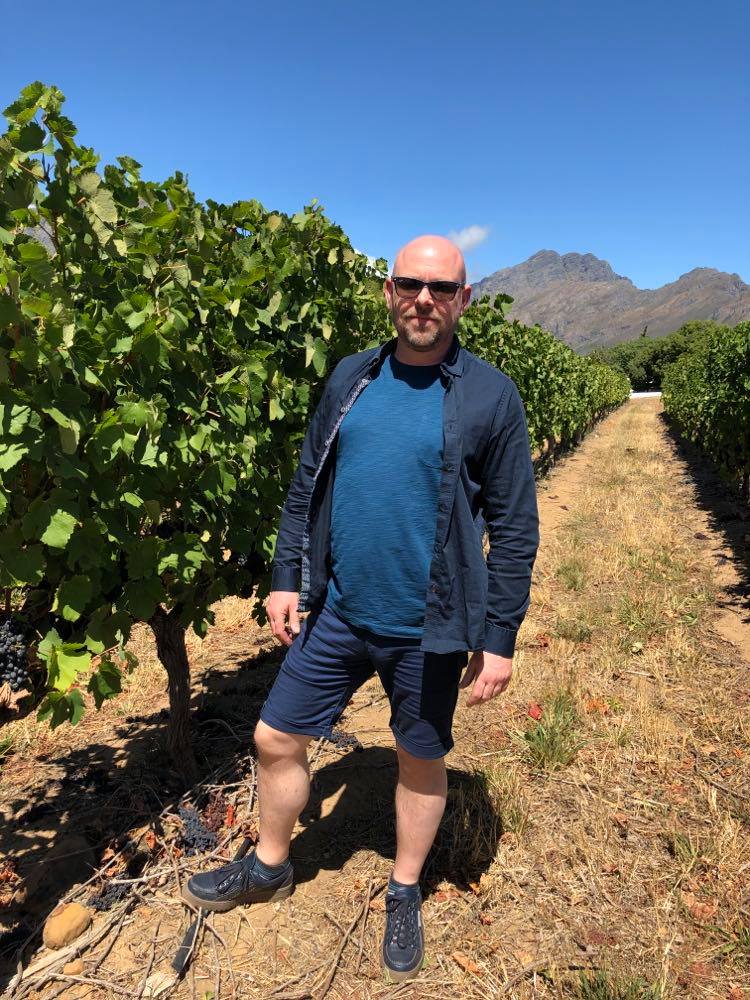
Marc Hough on one of his Croatia wine buying excursions
Visit Osijek on the Croatian Road Less Travelled
July 8, 2020 - TCN travel series The Croatian Road Less Travelled with Marc Rowlands. In this edition, we visit Osijek in eastern Croatia, on the banks of the Drava river and look at things to do in Osijek
Situated in the far east of Croatia, the city of Osijek is a sizeable distance from the regular coastal or capital city footfall of visiting tourists. Indeed, considering its history, importance and its vast, unique appeal, its surprising just how many Croatians you meet who have also never been to Osijek. Sitting on the banks of the Drava river, the city is the de facto capital of Slavonia and the administrative centre for Osijek-Baranja county and served as a strategically important outpost in the Roman, Ottoman and Austro-Hungarian empires. Osijek was the first city in Croatia to have a tramway and, after Rijeka, the first Croatian city to be serviced by an international train route (running to Pécs in Hungary via Beli Manastir, this very line was re-opened in 2018).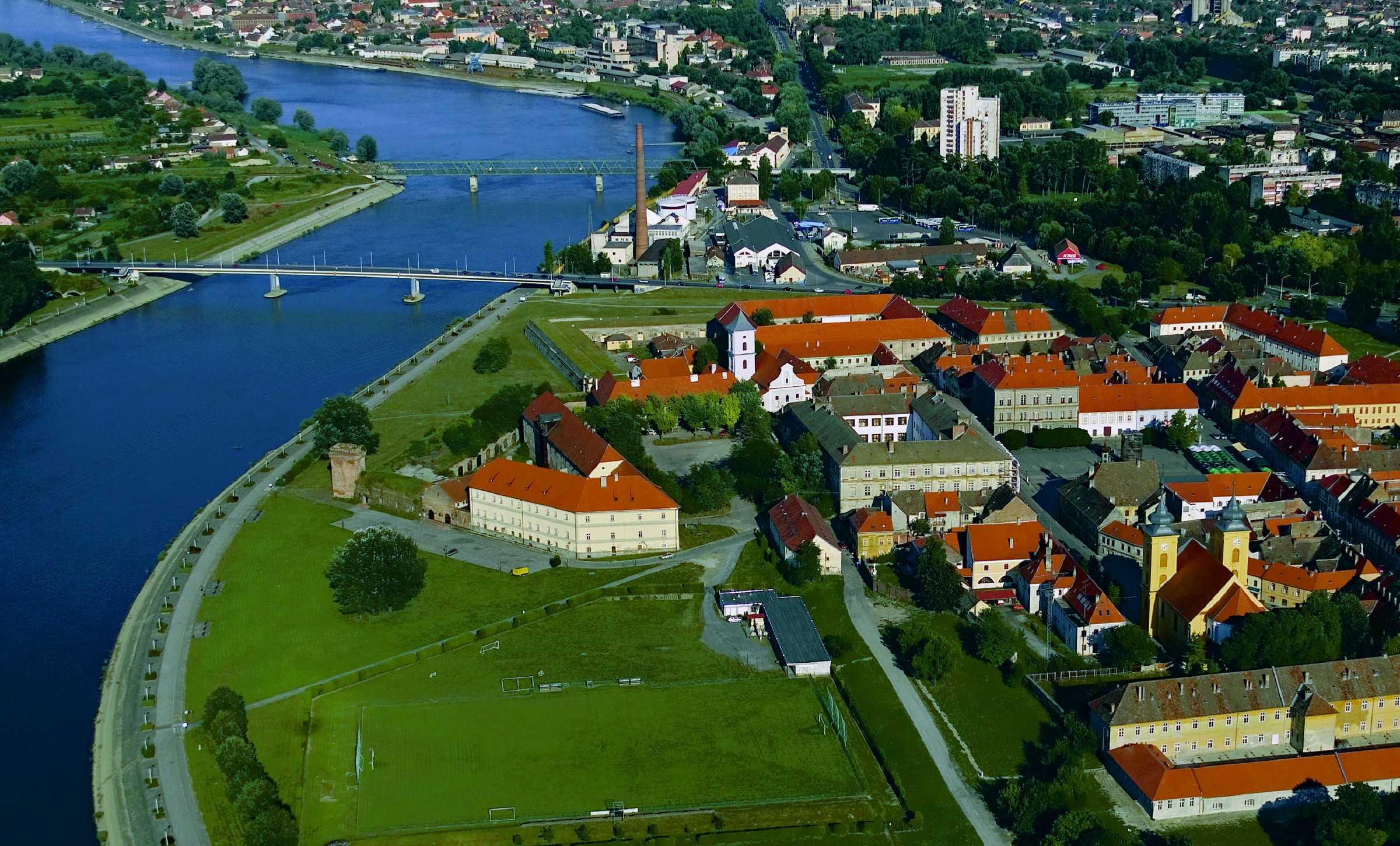
Osijek's Old Town, Tvrđa, is the largest and best-preserved ensemble of Baroque buildings in Croatia. It sits spectacularly by the Drava river, separated by the defensive walls of its Hapsburg-era fort © Romulić & Stojčić
Why visit Osijek?
Osijek is an incredibly beautiful place and perhaps Croatia's only option which simultaneously offers all the thrills of a genuine city coupled with incredible nature. It's possible to walk from one end of the city to the other passing only through statue-littered parks, the air is constantly fresh and, being Slavonia, the ground is entirely flat, making it a great place for bicycle enthusiasts. It's also a great place for swimming and other water activities such as fishing, rowing and boating. Osijek has a range of great nightlife options; three catering to fans of turbo-folk, two for those who prefer tamburica and Croatian folk music, one for students, one for the alternative crowd and several bars which host live music including jazz. Specialist monthly club nights offer drum n' bass, hip hop, house music and the techno night, Traum, is well known across Croatia and fronted by two of the country's finest DJs in the genre - Insolate and Volster.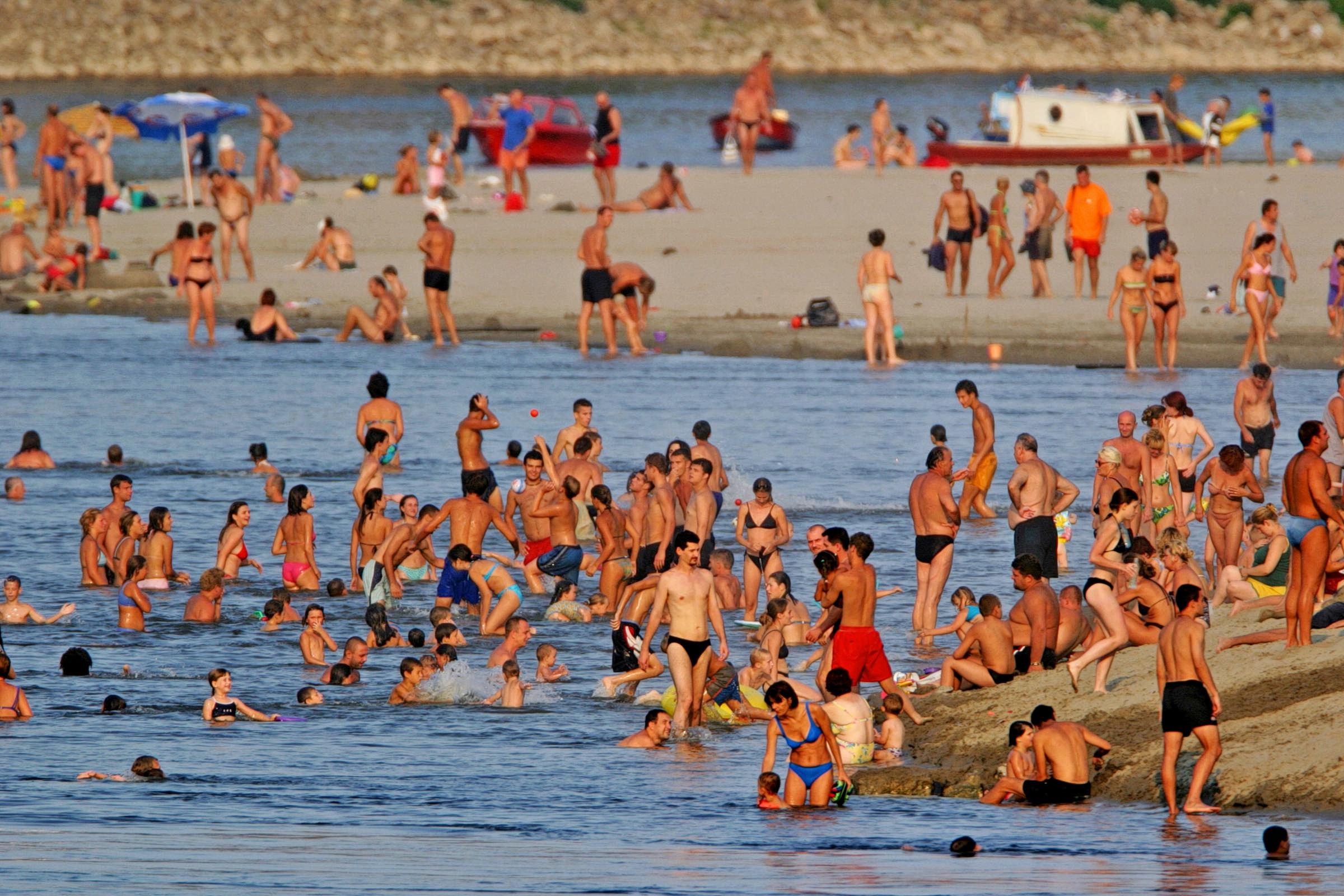
Cooling off in the Drava river, right in the heart of the city - just one of Osijek's great swimming options © Romulić & Stojčić
Osijek has, by far, the longest waterfront promenade in Croatia. Both banks of the Drava are pedestrianised. On the side of the city, the prom is lined with parks, cafes, bars and restaurants built within converted river-cruising boats. This side also holds the impressive Osijek city walls, behind which lies the Old Town centre, Tvrđa. On the opposite banks, you'll be walking alongside wild nature, with the vast open-air swimming complex Copacabana at one end and Osijek Zoo at the other. Osijek's pedestrianised bridge links both sides in the middle; it's is one of the city's most iconic sights and looks particularly special at night when colourfully lit.
Osijek pedestrian bridge by night © Romulić & Stojčić
Osijek and wider Slavonia are Croatia's least-heralded gastronomic powerhouses. The cuisine here is as unforgettable as the warm Slavonian welcome. Paprika-rich stews such as čobanac (made with locally caught wild boar and deer), fish paprikaš and perklet are a clear influence of nearby Hungary and most attempts to faithfully reproduce them outside the region fall extremely short. Although all you'll ever hear about is pršut from Dalmatia and Istria, Slavonians are masters of curing pork and even have their own high-quality breed, Slavonian black. Authentic kulen from Baranja is unquestionably the highest quality sausage from Croatia and you'd have to look hard to top Slavonia's paprika or garlic-flavoured kobasice too. In Osijek, as in its wider region, you can go to a restaurant and order one of the best pizzas you'll ever try and pay the same as you would for a starter course on the coast. 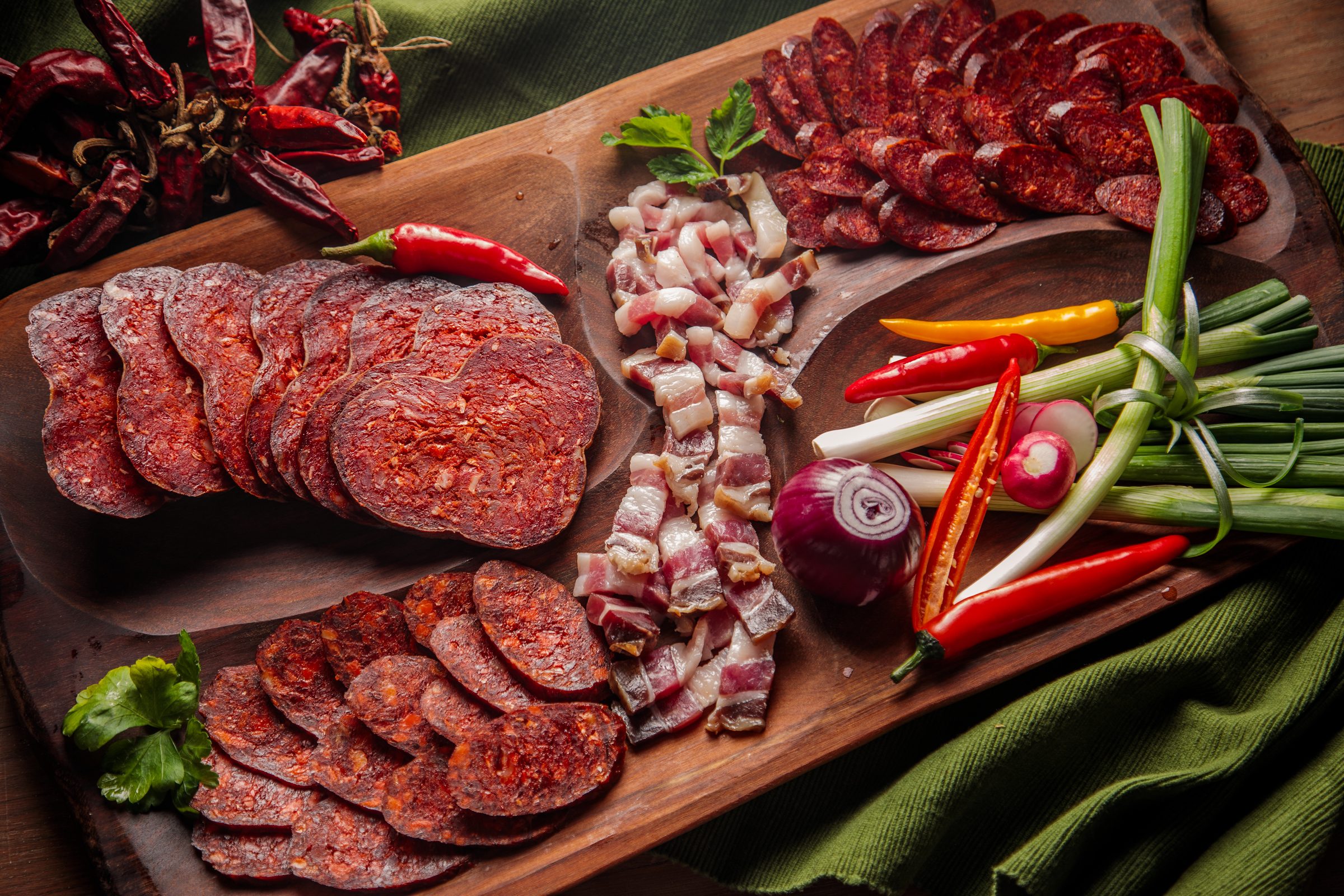
A selection of Slavonian meats. Kulen is a speciality of Slavonia and Baranja, the best quality sausage made in Croatia. It is preserved, made from top cuts of pork, richly red from paprika and versions from both Slavonia and Baranja are protected at an EU level. You can spot the one from Baranja by its irregular shape © Romulić & Stojčić
If you're a fishing or hunting enthusiast, this is also the place for you – days floating down the Drava along the 15 kilometre stretch before its confluence with the Danube can be as unforgettable as the monster-sized fish you can catch here. Osijek also makes a great permanent base for travel in the wider region, with trips across the nearby Serbian and Hungarian border offering different cuisines and culture again. The Slavonian white wine industry can also be explored from here. Equidistant between Zagreb, Budapest and Zagreb international airports, it's conveniently placed on the intrepid backpacker's route too.
Rowing on the Drava river in Osijek. The city has produced several champions in the sport © Romulić & Stojčić
How to get to Osijek
Osijek has its own airport. With established internal and international routes, this holds huge potential for the city. However, it is not without its problems. That no public transport service runs between the airport and the city is shameful. Unless you know a local, your only option is a taxi, whose fixed rates are substantially higher than the 25 kuna maximum it will cost you to travel between any two points in the city itself. Conflict between budget airlines and authorities has resulted in some international routes being cancelled. Bargaining budget airlines demand lower landing fees in return for the tourists they can deliver into the local economy. But, largely, those using the routes are not tourists; they are locals from Croatia, Hungary, Bosnia and, in particular, Serbs from Vojvodina, for whom Osijek is the most convenient airport to fly to on their way back from work in Germany or Ireland. Why should Osijek subsidise their travel? One solution may be to implement a passenger landing fee which can be fully recouped by tourists via vouchers for any accommodation they take in the city or wider Slavonia.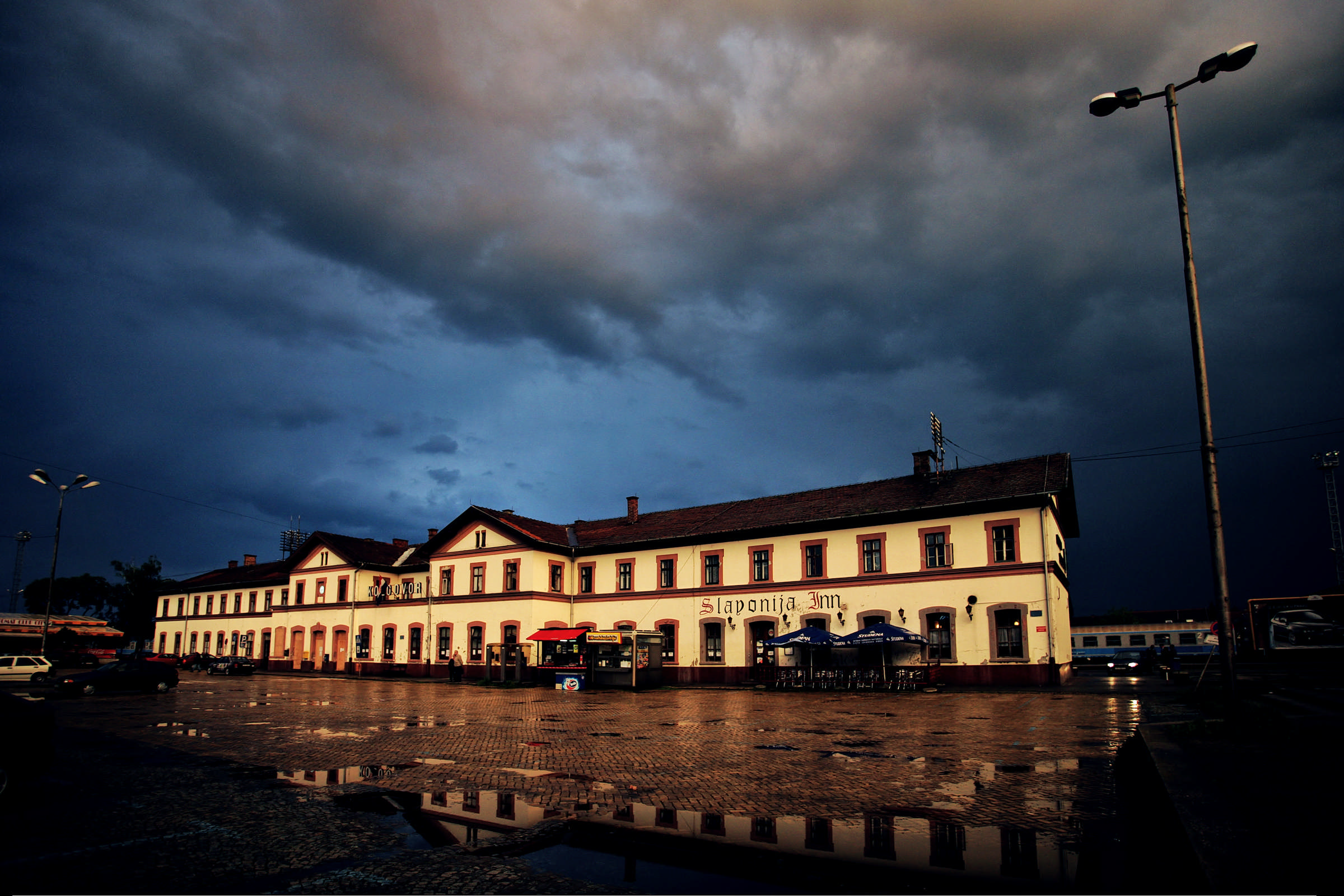
Osijek train station, one way to arrive when you visit Osijek © Romulić & Stojčić
Osijek is well connected by bus; you can travel there from Belgrade and Novi Sad in Serbia, from Zagreb, direct from coastal regions Istria, Kvarner and Dalmatia and even from Montenegro, via Dubrovnik and Imotski. It is accessible by train from all of northern Croatia and Zagreb although the lines and stock have not been updated in so long that, shamefully, it's actually quicker to take the fast train from Zagreb to Vinkovci, disembark and take a local bus to Osijek than it is to travel on the direct train there from the Croatian capital.
Where to eat: Slavonska Kuća, Kod Ruže, Vrata Baranje or Čarda kod Baranjca are brilliant, informal places to try traditional Slavonian cuisine, including all dishes mentioned previously. Further out of the city, Ugostiteljski Obrt Varga in Bilje, Citadela and Darócz in Vardarac and Didin Konak in Kopačevo are really special versions of the same. Rustika is the best sit-down pizza restaurant in the city, has a lovely summer courtyard for dining and is extremely affordable.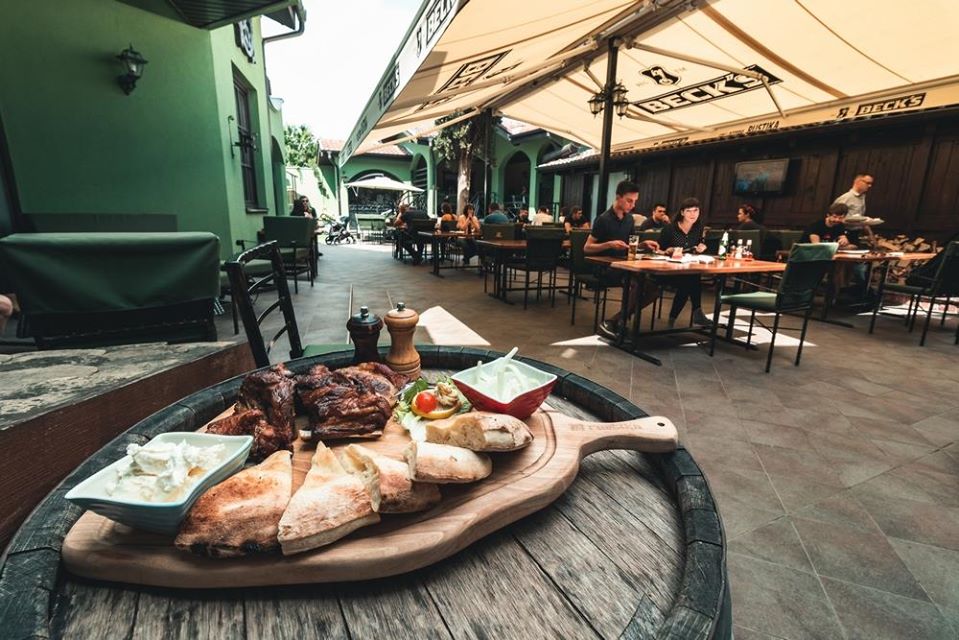
The courtyard at Rustika, a great, casual place to dine and try Slavonska pizza when you visit Osijek © Grill pizzeria Rustika
Food to go / home delivery: Lipov Hlad and Pizzeria Novi Saloon do the best home delivery pizza in the city (Rustika deliver too). Other choices are thin on the ground, save for the standard fast-food chains and pekara (the El Pan bakery on the edge of Sjenjak hood does the best burek with meat).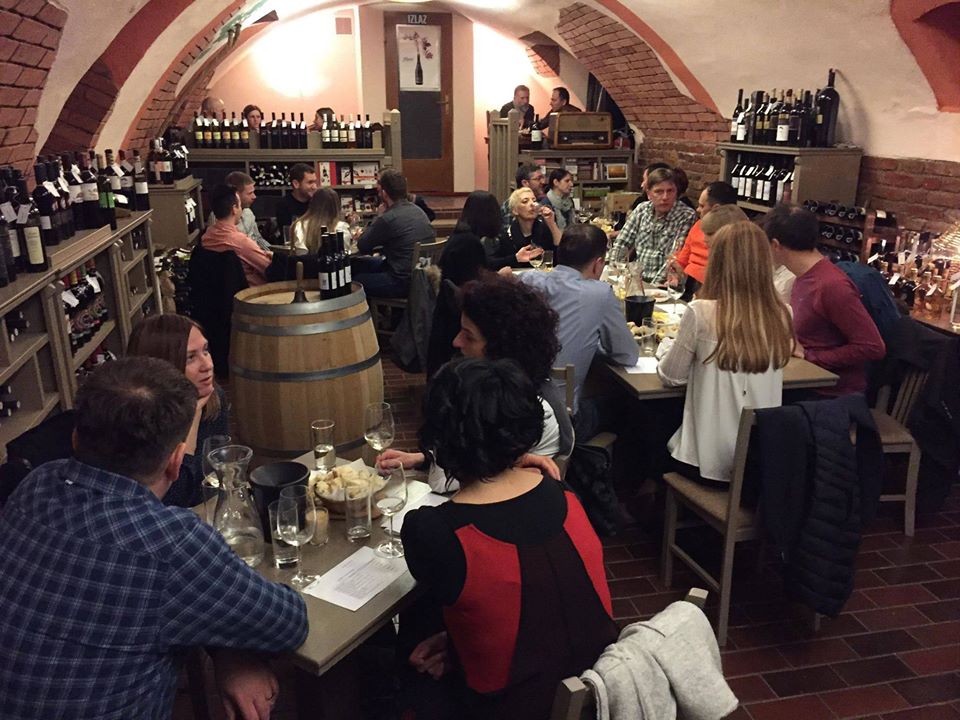
Get to know Slavonian wine when you visit Osijek © Vinoteka Vinita
Where to drink: The simple but extremely passionate Vinoteka Vinita is one of the best places to try Slavonian and Croatian wines, with many top and rarer titles sold by the glass. If you're more into beer, Beertija in the modern city centre has a great range. General Von Beckers on Tvrđa is the best place to try the leading local craft ale, Beckers, but all of the bars on Tvrđa are worth investigating and during the summer their terraces stretch far into the historic square creating a unique atmosphere.
What's new? Osijek's football club is undergoing a renaissance following its purchase by new investors. An impressive new stadium is reaching completion and you shouldn't be surprised to see this team challenging for the top domestic titles, or reaching European competitions, in the near future.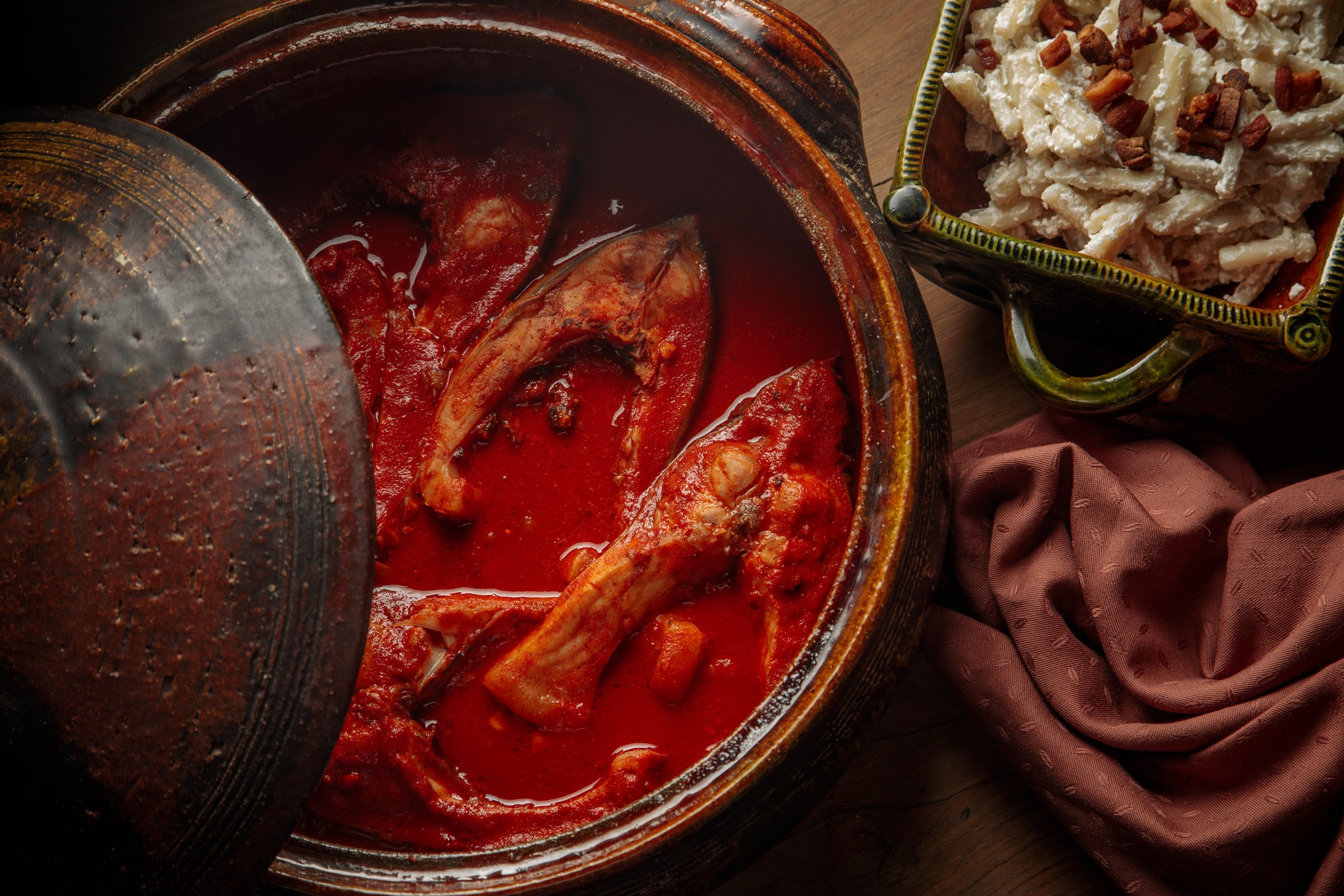
Fiš paprikaš is a Slavonian speciality. Spicy from paprika, it is made from river fish and can often be seen being cooked in a large pot over a blazing open fire if you visit Osijek in warmer months © Romulić & Stojčić
What not to miss: The protected nature park Kopački rit is wonderful to visit at any time of year, a sanctuary for all manner of wildlife, particularly rare species of birds. On Tvrđa, Slama Land Art hosts workshops, art and music events and you'll meet great creative types there. There's an extreme sports event, Pannonian Challenge, which sees international competitors visit Osijek and an annual Osijek Beer Festival which feels more like a street party. There's also a music festival called UFO. Osijek Wine Days and the celebrations celebrating the end of term at the city's sizeable university are each year accompanied by great partying and music performances. Look up the art deco Cinema Urania. At over 100 years old, it's Croatia's best independent cinema outside Zagreb. If you're looking for something a little more upmarket than the aforementioned Copacabana outdoor pools, or if you're visiting in cooler months, the renowned Bizovac Toplice is close by and there are free bus shuttle services from the city. It's a sprawling spa complex with multiple pools, offering fun and wellness therapies. But, whatever you do, don't miss the extraordinary and varied architecture of Tvrđa or Slavonian cuisine.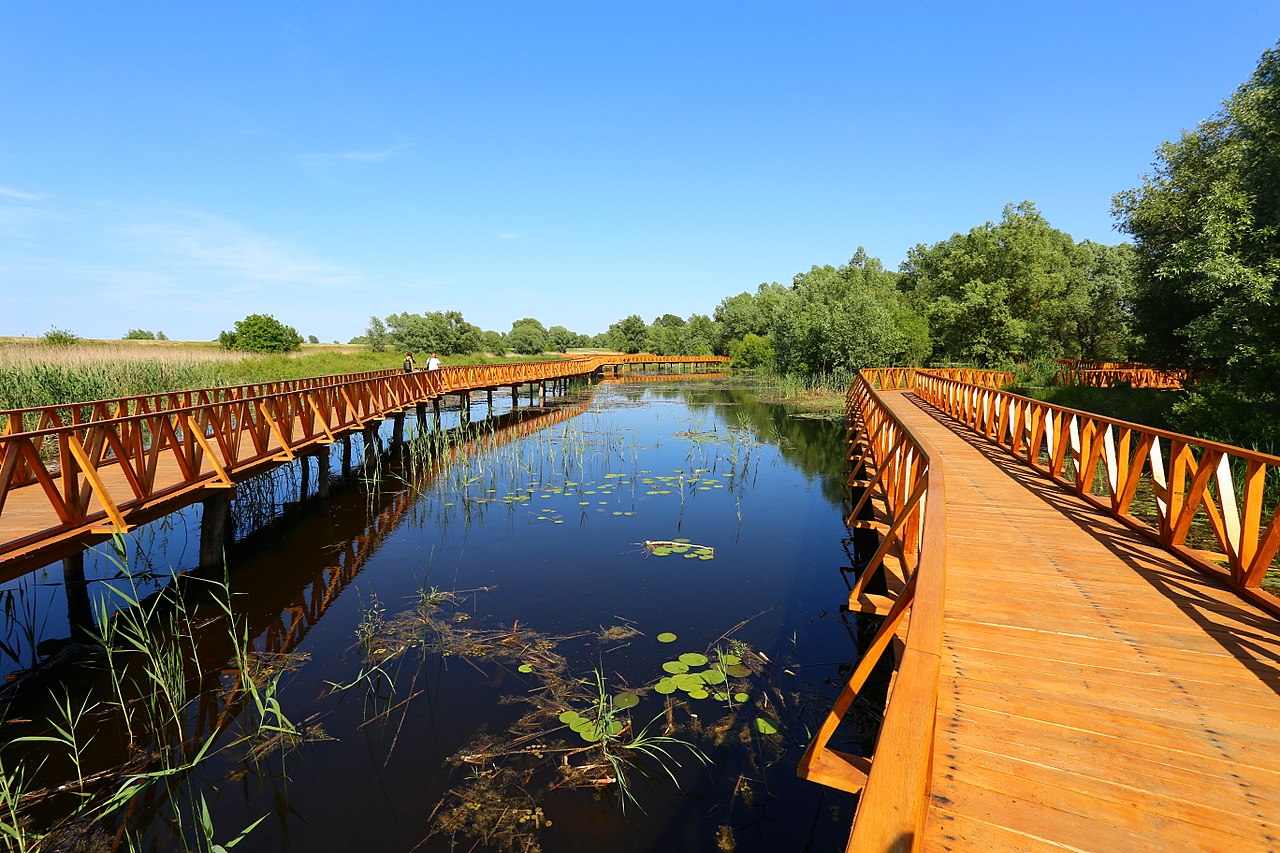
Kopački rit. The nature reserve is a must all year round when you visit Osijek © Misalalic
What to buy: If you're heading somewhere else in Croatia after you visit Osijek, take some Baranja kulen with you for posh sandwiches. Slavonia is famous for its honey, which is protected at an EU level. Take some back home with you. Local designers Lega Lega make cool t-shirts and accessories emblazoned with words exclusively used in the local dialect. Pick up some Slavonian white wine when you visit Osijek. Graševina is the most commonly made white wine in Croatia and the most popular. They make the best Graševina in Slavonia, but also look out for Chardonnay, Pinot Blanc, Pinot Gris, Sauvignon Blanc and Traminac too. There are countless excellent wine producers in Slavonia to look out for, including Kutjevo Graševina, Krauthaker, Galić, Trs, Adžić, Kolar, Enjingi, Antunović, Erdut and Iločki Podrumi.
'Lega' in local dialect is short for colleague. It is a term affectionately (and exclusively) used when speaking to someone from Osijek. Try using it when you visit Osijek © Lega-Lega
On these links you can read about the other destinations in our The Croatian Road Less Travelled series:
Ludbreg - a site of Holy pilgrimage where the historic meets the contemporary
Donji Miholjac - a hidden gem in the heart of the Pannonian basin
For the latest travel info, bookmark our main travel info article, which is updated daily.
Read the Croatian Travel Update in your language - now available in 24 languages
Join the Total Croatia Travel INFO Viber community.
Slavonian Company Uses Farm Waste to Produce Electricity for Households
One Slavonian company has come up with an innovative idea that turns unwanted plant and animal waste, among other things, into something much more than useful for as many as 12000 households...
As Novac writes on the 24th of June, 2020, in Croatia, there are a total of 1230 solar power plants with an installed capacity of 53,434.24 kW and 40 biogas plants with a total installed capacity of 44,722.00 kW, and there are four biogas plants with a total capacity of 5,200.00 kW which aren't yet connected to the grid.
When it comes to biogas plants, the basis of energy production is primarily in the use of manure from farms, as well as silage and other organic residues, where the decomposition of organic matter produces biogas, whose combustion in a cogeneration plant produces electricity. Therefore, it's rather logical that a larger number of biogas plants are found as parts of companies in Baranja and Slavonia, where most of the country's domestic livestock is raised. One Slavonian company that has several biogas plants to its name is the Zito group, Glas Slavonije writes.
According to Ivan Pandurevic, Executive Director of the Investment, Development and IT Department of the Zito Group, the company has a large production and electrical energy has a larger share in total energy consumption.
Our goal is to increase the share of renewable energy sources in all locations of the group in order to reduce our dependence on significant changes in the price of electricity. Thus, the photovoltaic power plant is another source of electricity production in the Zito Group. We convert solar energy into electricity without polluting the environment. In energy conversion, we use the most modern and completely safe equipment available on the market, and we always give preference to Croatian contractors and equipment manufacturers. It's important to note that we have a peak consumption per day, so we consume the produced electricity when the greatest production need is, for example, for cooling, ventilation, or some other production process,'' explained Pandurevic, adding that when it comes to investments made by this Slavonian company, in 2020, they're primarily focused on rationalising their energy consumption.
"So far, we've produced more electricity from renewable energy sources than we've consumed. The overall proposal of the investment plan for 2020 at the group level stands at sixty million kuna,'' noted Pandurevic, adding that they are currently busy constructing two solar power plants of about 600 kW, and they're also designing several solar power plants with a total capacity of more than three MW, which contributes to sustainable development and meeting the set goals of the company.
''In addition to the two existing biogas plants - Novi Agrar and Mala Branjevina, the Orlovnjak biogas plant with an installed capacity of 1.7 MW was put into operation back in 2016, and the Klis biogas plant with a capacity of 1.4 MW was put into function in 2018, thus increasing the share of renewable sources of energy in electricity production, which also contributes to the national stability of the electricity system, as well as the implementation of the common European Union (EU) energy policy prescribed by the National Action Plan for RES 2020. Our plants produce almost 45 GWh of electricity per year, which provides electricity for twelve thousand households,'' concluded Pandurevic of this forward-thinking Slavonian company.
For more, follow our business page.
Slavonia Finally Gets Joint Platform for Tourism Promotion
Slavonia is one of the most overlooked parts of all of Croatia. This eastern part of the country, formerly the bread basket of the entire region, is now famed for its mass emigration. With all of the money pumped into the coast, the primary destination of tourists to Croatia, what this region has to offer has unfortunately been kept very much in the dark. Until now.
As Poslovni Dnevnik/Marija Crnjak writes on the 7th of June, 2020, Feel, taste, meet/Osjeti, okusi, upoznaj, are the three key messages of the new digital platform Slavonia.travel, where for the very first time - the whole of Slavonia is presented to tourists in one place.
A new communication strategy based on the strategic marketing plan of Slavonia made by the Institute of Tourism, in cooperation with the tourist boards of five counties in Slavonia, was designed by the agency S.T.A.R. Digital, and the project was thought up and designed during Croatia's coronavirus lockdown period.
As the project associates pointed out at the presentation in Zagreb on Friday, the goal of the platform is to provide all the information about Slavonia in one place, jointly represented by the five county tourist boards, and this is the starting point for the eastern Croatian region's future promotion on the global market.
For a start, Slavonia will be presenting itself to domestic guests in the campaign on social networks in the coming days, which already makes up about 90 percent of tourist traffic in Slavonia, and which boasts great potential for tourist traffic, especially in today's unpleasant circumstances.
"Slavonia is the right choice for all those who want to travel in times when budgets need to be taken into account and when social distancing still needs to be paid attention to, but on the other hand - it's also for all those who want to enjoy the freedom that travel provides. The new platform provides potential guests with key information about our unique destination that you should definitely feel, taste and meet. As a cluster, we've been conducting promotional activities together over recent years, but in digital times this communication platform is an extremely important place for travel inspiration and information about Slavonia as a destination,'' said Rujana Busic Srpak, the director of Vukovar-Srijem County Tourist Board.
As stated, the new platform is based on the new strategic marketing plan for Slavonia, which on the one hand included a homogeneous and complete space, and on the other, each of the five counties has its own specifics.
"We know that tourist products know no administrative boundaries, we tried to answer what binds the area, what unites it and what is the common denominator," said Snjezana Boranic Zivoder from the Institute of Tourism, commenting on tourism trends.
Green, ecologically preserved, undiscovered and honest, and in connection with the current situation, safety and destinations without crowds are important. In this context, Slavonia is on trend and perfectly respond to these demands.
For more, follow our travel page.
PM: Over HRK 12 BN Contracted As Part Of Slavonia Project
ZAGREB, June 6, 2020 - Prime Minister and HDZ president Andrej Plenkovic said in Pozega on Saturday that in the July 5 parliamentary election citizens would choose whether to vote for those who had ensured health, jobs and economic growth or groups which were an end in themselves.
He said over HRK 12 billion had been contracted as part of the government's Slavonia Project.
"In the last campaign, we announced the Slavonia Project as a priority. Over HRK 12 billion has been contracted. We are realising projects. The government and the ministers are present in Slavonia. I think voters, having learned from the presidential election, will think carefully about who to vote for. The choice is whether you will go for those for whom you know who they are, who have ensured health, jobs, economic growth," Plenkovic said in the Slavonian city of Pozega where he started his tour of eastern Croatia.
"Last night Fitch upheld Croatia's credit rating. That means they trust us, they see resilience, know-how, and trust to return, with the economic recovery measures, to the previous level as soon as possible."
Speaking of coronavirus, he said "Croatia took a very good position, which was no accident. The economic measures we provided were no accident. Specifically, more than 8,000 people in Pozega-Slavonia County received wages for March and April and will receive them for May solely because of this government's political will and the way to find the money for that."
"We are counting on the safe vote for those you can seriously count on in the next four years. You have those with whom you don't know what you will get, those whose topics have nothing to do with the future," Plenkovic said, adding that choosing those who were rational should not be too difficult, especially in Slavonia.
SDP Chief: After Election Victory, Ten-Year Revitalisation of Slavonia and Baranja
ZAGREB, May 20, 2020 - Social Democratic Party leader Davor Bernardic said on Wednesday that after the election victory of the SDP-led coalition, ten years of revitalizing Slavonia and Baranja would ensue.
"The people here do not deserve to live in poverty. Our task, through the Slavonia 2030 program is to revitalize Slavonia and Baranja in ten years, to increase agricultural productivity twofold, to ensure subsidies for the smallest. To ensure so that they can place their goods and not be racketeered by retail chains and to boost industry," Bernardic said in Vukovar during his election trail.
To show that that is possible, Bernardic pointed out the example of Nova Gradiska Mayor, Vinko Grgic of the SDP who, as he said, had provided the town with investments valued at HRK 2.5 billion.
"Nova Gradiska is becoming a leader in Slavonia and people elected Grgic not because he is good looking and capable but because they decided to vote for themselves," Bernardic underlined.
Large Slavonian Company Launches Production of Sought After Product
As Poslovni Dnevnik writes on the 14th of May, 2020, this large Slavonian company was motivated to launch a new product by the demand for protective equipment, but also by the fall in the market of front/entrance door panels in Croatia and in the surrounding countries.
Vinkovci's Grad-Export, one of the leading European manufacturers of decorative panels for front doors, is a Slavonian company which reacted remarkably quickly to the current changes in the market caused by the outbreak of the coronavirus pandemic. Just under two weeks ago, the company placed a disinfection barrier for footwear on the market, which is supposed to be placed in front of the front door, Jutarnji list reports.
''The idea for the DS barrier is mine, it was developed by my associates in the company and, most importantly, it was well received by the market,'' explained Petar Simic, the founder, owner and director of this Slavonian company.
The placement of Grad-Export's new product was motivated by the demand for disinfection and protective equipment, but, as he pointed out, the market of front door panels in Croatia and in the surrounding countries also fell by about 50 percent.
''I had to do something, at the time when the coronavirus crisis broke out, I had to send fifty percent of the company's employees home because there was simply no work for them. However, I didn't fire any of the 186 employees who work for Grad-Export, and right now as we speak, we've started working on 160 DS barriers for clients. We won't be able to do everything today, so we'll work on Saturday as well,'' noted Simic, who has so far sold about 700 of his DS barriers, the application of which possible in almost all institutions, from shops and business premises to households.
The barrier consists of vacuumed and profiled PVC, steel infill, anti-slip EPDM rubber and fasteners. The Slavonian company Grad-Export is otherwise one of the largest companies in Eastern Croatia with an annual revenue of around 90 million kuna.
For more, follow Made in Croatia.
Slavonian Revival? 1467 New Companies Opened in 2019!
Could a Slavonian revival be on the cards? While the region continues to undergo its signature hardships, some encouraging business news emerged out of Eastern Croatia last year...
When you think of Slavonia, you likely think of what was once the bread basket of the entire country having now been left to rot, proverbially of course. The overlooked Eastern region of Croatia once fed the country, but is now struggling with its main export being man power and human labour heading off to other EU countries to try their luck at better lives and more economic stability.
As Poslovni Dnevnik writes on the 9th of March, 2020, according to data published by the gradonacelnik.hr (mayor.hr) portal, 15,445 new companies were opened in Croatia last year, 1178 more than were opened back in 2018.
However, 10,814 enterprises were closed or deleted from the court registers, 623 more than in the previous year. This is evidenced by data from the court registry of the Ministry of Justice, which confirms the continuation of positive trends and the growth of entrepreneurship in Croatia, which, including 2017, saw the opening of more than 43,000 new companies and the closure of just over 33,000, according to Glas Slavonije.
Data on the number of companies opened has been summarised in the registers of the commercial courts at which they were registered, and the figures are such that five out of nine commercial courts in Croatia (noting that the one in Dubrovnik started operating only in September last year) show positive trends, ie growth in the number of companies opened.
The largest increase over the previous year was recorded by the Commercial Court in Bjelovar, which has taken numerous praiseworthy steps in being more transparent and citizen-friendly, followed by TS Osijek. Could this mean the beginning, albeit humble, of a desperately needed Slavonian revival?
The Osijek Commercial Court covers the territories of the Osijek-Baranja and Vukovar-Srijem counties, and has a permanent service in Slavonski Brod with its jurisdiction, and for such a large territorial area, it should not be surprising that such a large increase in companies being opened.
However, the value of the figure 1467 should not be diminished at all, as it is almost a third (30.6 percent) more than the year before. In the two previous years, more than a thousand companies were founded. Much has been written about this kind of awakening of the local Slavonian economy, a Slavonian revival if you will, and the total income of the Osijek-Baranja economy for the last year stood at 28.5 billion kuna, which is an increase of 2.2 billion in just one year.
The incentive role of local self-government units must not be neglected. In the past two years, Osijek-Baranja County has doubled its support for entrepreneurship, from 4.2 million to 8.6 million kuna. In addition, the County participates in subsidising interest rates for loans to entrepreneurs, proactively participating in everything that, according to Mayor Ivan Anusic, will increase the competitiveness of local companies, but also create new businesses and companies, new values, professions and most importantly of all - new jobs.
Similar trends exist in the City of Osijek itself, where an encouraging 427 companies were founded last year. Entrepreneurship grants from the City of Osijek budget have increased to almost seven million kuna now, and Mayor Ivan Vrkic points out that there have been 2.5 thousand new employees in Osijek. The model in which the City of Osijek subsidises the cost of two gross salaries for each new employee is one excellent example. Conditions, however, are local-patriotic - the company must be based in Osijek, and the (newly) employed person must be an Osijek resident.
However, the biggest boom in entrepreneurship took place in Bjelovar. Last year, 654 new companies were registered with the Commercial Court, which is a massive 71.65 percent more than the year before, and 93.49 percent more than in 2017, when Dario Hrebak took over the management of the city and launched a series of measures to encourage entrepreneurship, about which we have written extensively.
''We want to show that one can succeed if one thinks of the common good rather than the individual good. The real indicators of this work, which I expect to see, are yet to be seen and that will take a few years. It's important that we've shown that this model of managing public resources can be changed and that we've shown that its redesign is very possible,'' Bjelovar Mayor Dario Hrebak said for gradonacelnik.hr.
After Bjelovar and Osijek and away from the deeply desired Slavonian revival, the Dalmatian city of Zadar recorded the highest growth. Mayor Branko Dukic pointed out that this is the fourth consecutive year in which all economic indicators have been continuously and significantly growing, and that Zadar today is a city of dynamic and agile entrepreneurship.
Make sure to follow our dedicated business page for much more.
Zagreb Homeless Shelter to Close Because of Croatia Government Inaction
March 2, 2020 - Zagreb's homeless population could soon lose the roof over their heads. The only homeless shelter in Zagreb, which offers various forms of practical help and advice, is about to be closed permanently unless the Croatia government acts soon.
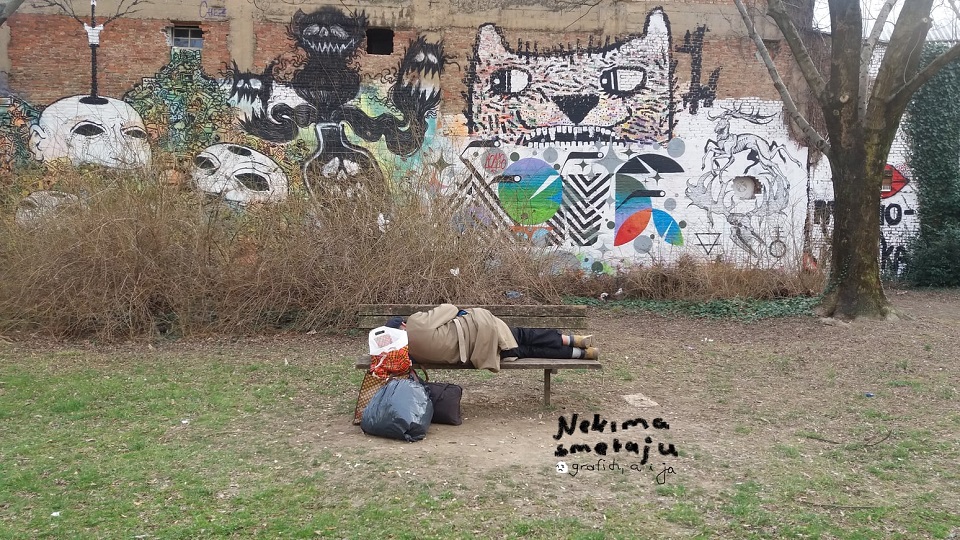
Homeless in Zagreb | HMB Facebook
Most Homeless Shelter Users Come from Slavonia
"This is the only place I can come without money and have coffee, get on the computer if I need to, or just warm up when it's cold… it’s the only place,” explains a younger user regarding his visit to the Homeless Assistance and Support Centre on Branimirova Ulica 53 in Zagreb. He is originally from Slavonia and, as he pointed out, would not know how to survive in Zagreb without this shelter, which is part of the Hrvatske mreže za beskućnike (Croatian Homeless Network).
"Because it's a relief to know that I can always come in from off the street if I need to or want to. Besides, we can also borrow a sleeping bag here or seek advice. It would be a big blow if they close the centre – for myself and many others,” he added.
Zagreb Shelter Will Close in Three Months: Contract Expires
As reported by Igor Lasić/DW on March 2, 2020; the Zagreb shelter's three-year contract with the government expires in three months. Therefore, by law, they will have to move out of their rented space. A new competition for a grant has not yet been announced. Even if it occurs in the meantime, it will be almost impossible for the rest of the procedure to be completed before that deadline. In reality, the work of the shelter can only be sustained by a gesture of extraordinary grace by the Government of Croatia, or the competent Ministry for Demography, Family, Youth and Social Policy.
"I found out about this shelter through Facebook. I’m from Slavonia and could not exercise my rights as a child of a war veteran, so I had to leave. The biggest advantage of this shelter is that it helps people find jobs. There is also a housing community, so that some people can find temporary accommodation here as well," the Slavonian continued.
The homeless young man has worked several jobs since, like food delivery and similar, but never for long. He has also worked abroad in entry-level construction jobs but said that he has faced various setbacks. He does not speak any foreign languages, so he cannot not even seek protection or better opportunities.
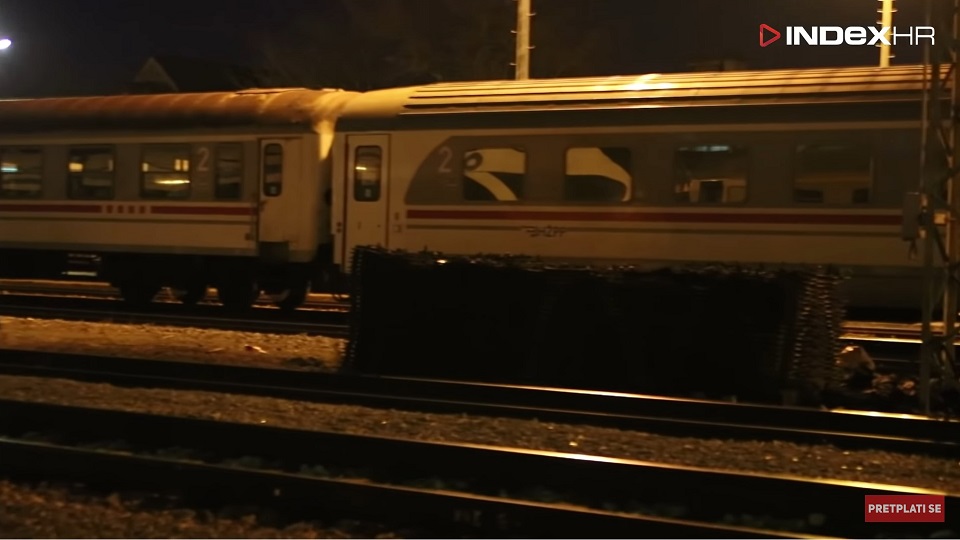
About 50 to 70 homeless live in abandoned railroad cars at the Zagreb Glavni Kolodvor according to HMB | Index YouTube
Thirty Visitors Per Day in Winter, 352 Registered Users
"Over twenty people come to our shelter daily, on average, and more than thirty in the winter, but we have a total of 352 registered users. Some just come for coffee, some for legal or other advice and some participate in our educational workshops. We also help users with finding a job, which is extremely important for re-socializing the excluded members of our society. But our best program is the residential community. In one apartment we have enabled a total of 32 younger users to become more independent over time and resume life from a more stable starting point. It is difficult for us, who have always had housing, to understand how important this is,” Slavko Mađor, manager of the shelter, revealed.
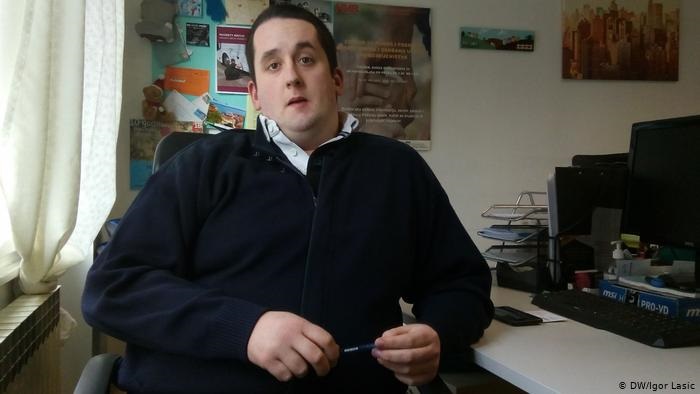
Slavko Mađor | DW Igor Lasic
"It is difficult for us to understand what it’s like when someone has to sleep in a public booth and then goes to work every day from there. Or how a person becomes homeless. Well, even my mother was surprised and asked me how this could be," explained Mađor.
Another user was from Zagreb. He did not want to be photographed or have his name published. With their permission, two other users were photographed at computers while working, but only from the back. It's not hard to grasp the backlash from publicity. An elderly lady sat in the entry, avoiding eye contact. Another entered the shelter and spoke to Slavko Mađor in English. She's French and has been coming for a while, and nobody knows what kinds of challenges she’s dealing with.
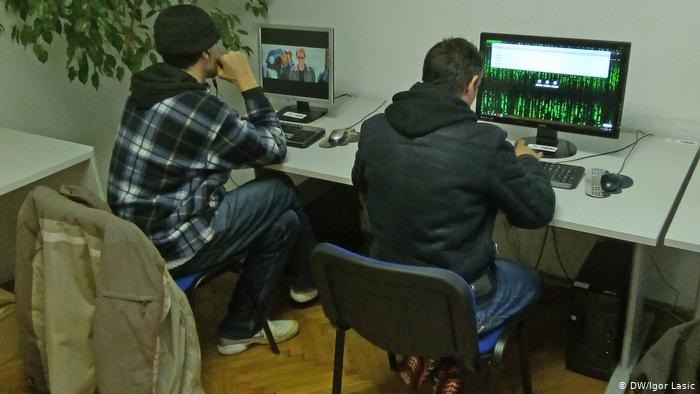
Zagreb Shelter Users | DW Igor Lasic
Shelter Offers Help, Food and Accommodation
"In a situation like this, it means a lot when people know that someone is available and willing to pay attention to them, let alone help with something else. This is more meaningful than just food and accommodation," summed up the man from Zagreb. He claimed to be 42 years old and is looking for a job after a temporary one ended, which he obtained through the shelter.
"In any case, I am not officially registered as a homeless person, but that is only because I can sleep with a friend in Velika Gorica right now," he explained.
"I used to be a waiter but now I’ll take any job I'm offered. And while I’m waiting, I’ll stop here and warm up, eat a sandwich, spend time at the computer and talk to people. We can talk like real people without fearing that someone will judge us because we are in a situation like this,” he added.
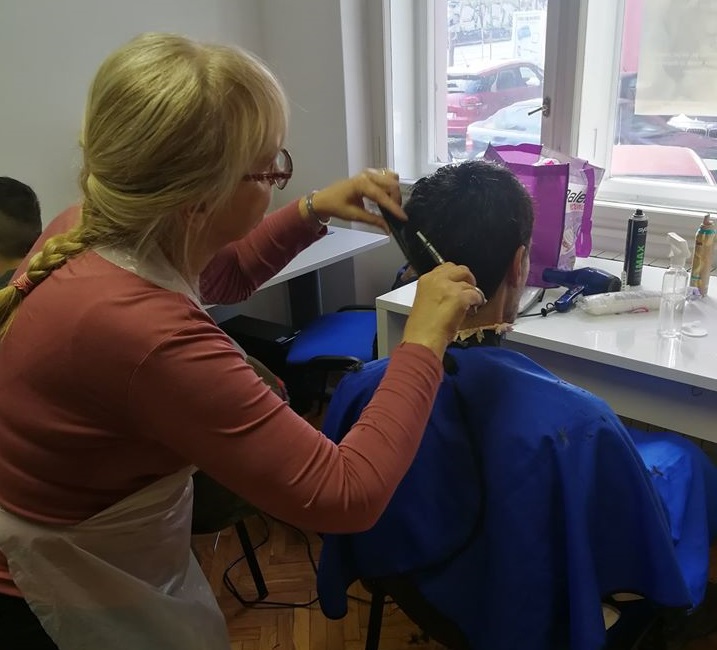
HMB Facebook
Only Homeless Shelter in Zagreb
The Homeless Help and Support Centre is just that: a place where the homeless can obtain help and necessities beyond just a meal or shelter. There aren’t any other facilities like this in Zagreb. And this is where the existentially afflicted from all over Croatia wind up. Most of them come from Slavonia because not only does Slavonia have the lowest standard of living and the weakest labour market; it also have the weakest social welfare system. But now the survival of this lone refuge is endangered, or at least extremely uncertain, until the government is willing to act.
Those who rely on this shelter to meet their essential needs and better their situation need not be left with a parting courtesy of hoping to meet again one day in the same place. In any event, upon vacating the building at Branimirova Ulica 53, at least the shelter will not have to remove their sign from the facade near the entrance, even if they must move out. It has already been removed, at the request of the occupants of the building, who own their homes.
Index Profiles Zagreb Homeless Man
Follow our Politics page for updates on this story and the challenges of the homeless population in Croatia. More information about the Hrvatske mreže za beskućnike (Croatian Homeless Network) can be found on their website here and Facebook page here.


